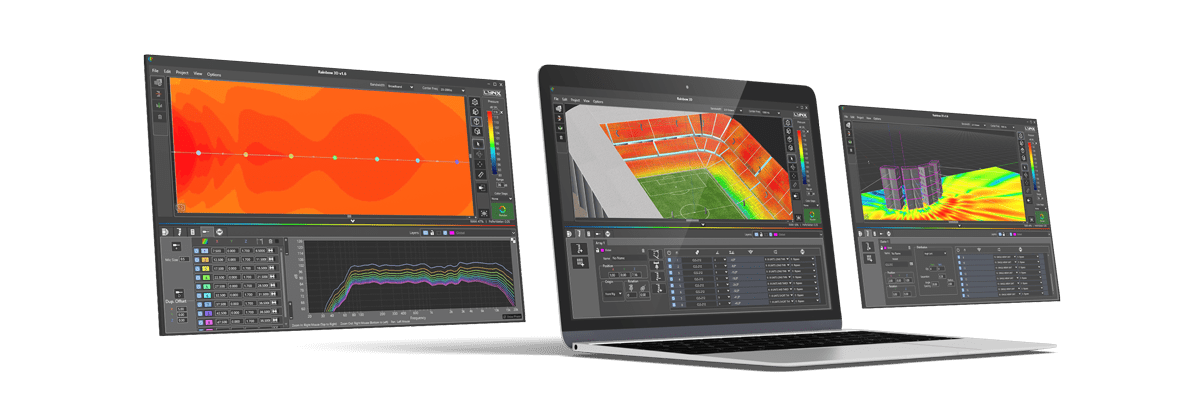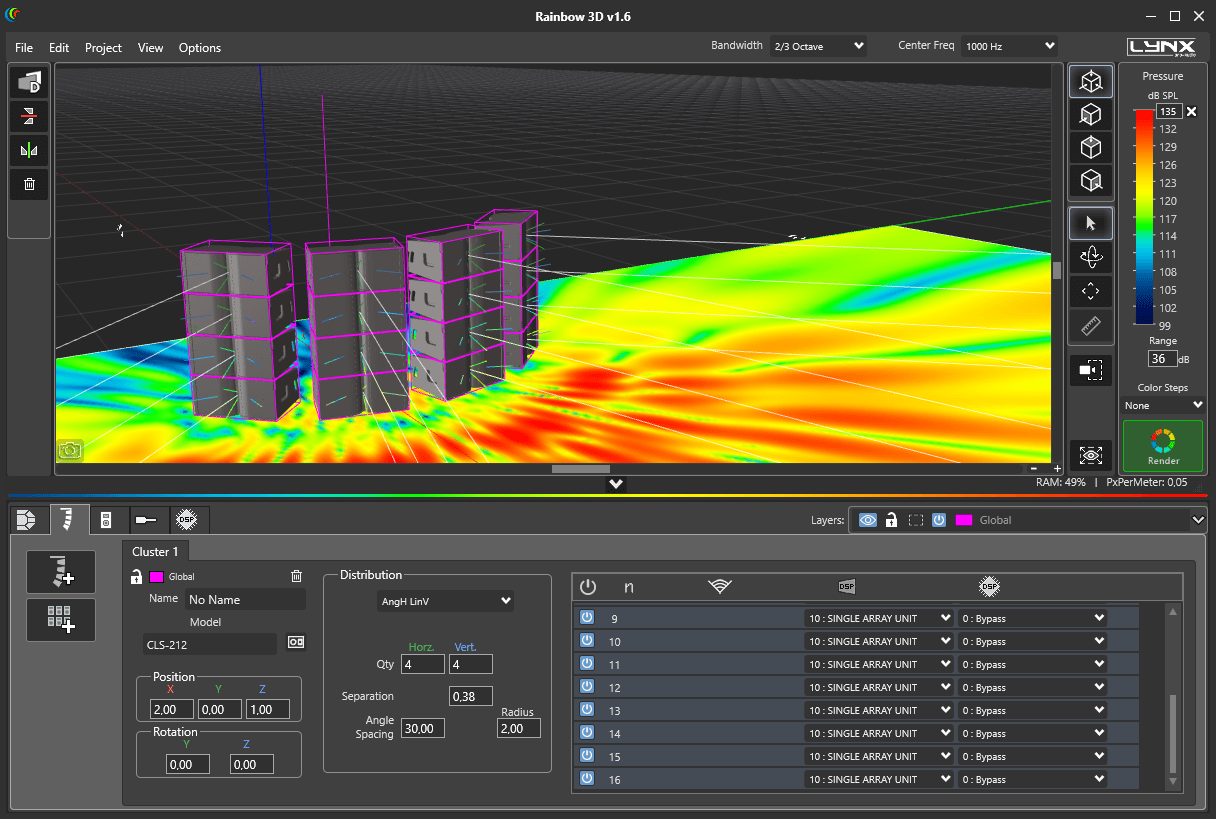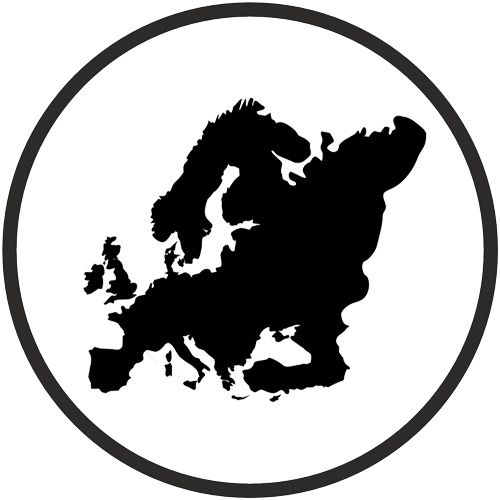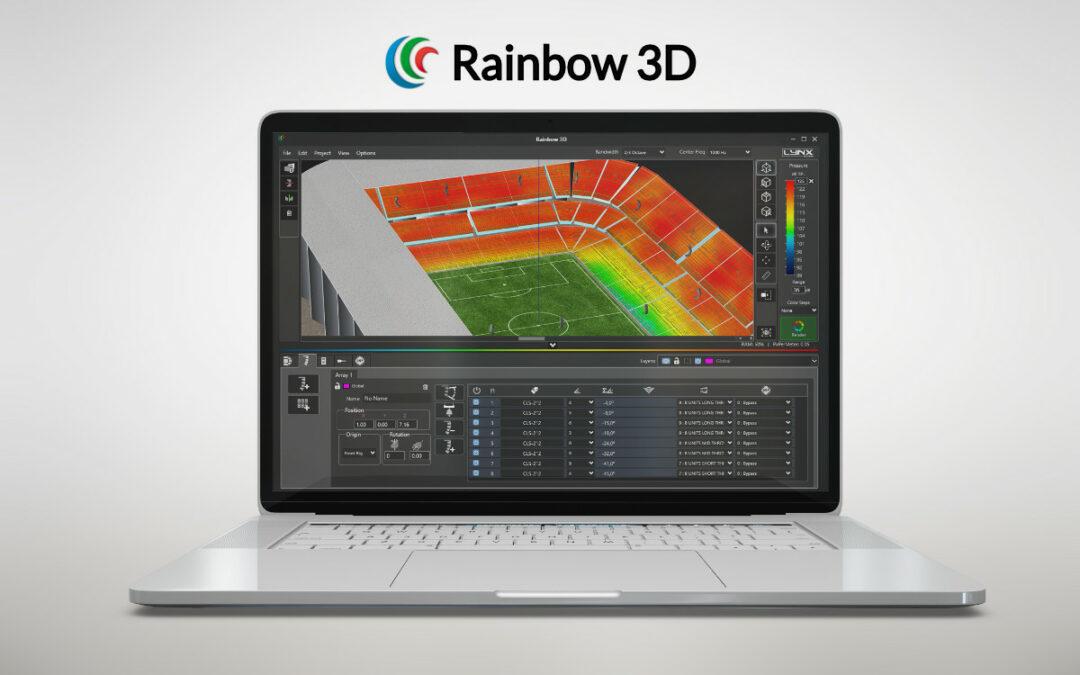
We are pleased to announce the availability of Rainbow 3D, our new electro-acoustical prediction software for loudspeaker systems, boasting comprehensive high-speed simulation in a three-dimensional environment. You can download it for free.
Despite the existing 2D software and led by Raúl Jordán from R&D department, Rainbow 3D has been coded from scratch in a 5-year in-house development process. In tandem with this, over the course of this year new spherical measurements of the company’s full loudspeaker portfolio have been performed in our recently built anechoic chamber. Carlos Matalí, R&D Manager, notes: “Although 5-degree polar resolution is commonly used, products such as line array modules generate extremely narrow beams at high frequencies, so we use two degrees for those. This means measuring and storing exponentially more data points, but significantly improves calculation accuracy”.
The software provides a visually rich environment, with detailed loudspeaker representations and selectable textures for planes. As well as materials you would expect such as wood or concrete, or textures from imported images, drawings of elements such as a football pitch or a basketball court can be picked from the built-in library as a simple way to add recognisable characteristics. Furthermore, so-called ‘ornaments’ like a basketball hoop, a stage with side stairs, truss modules, or a theatre seat can be picked from a library. Ben Sinclair, Sales Director adds that “while accurate simulation is obviously the main goal here, being able to quickly put together a visually detailed and attractive project that the customer can better relate to is certainly also a big plus “.

Extensive productivity tools such as copy and paste, duplication with offset, and drag-and-drop are provided. Each corner in a 4-vertex plane is independently definable as sloped or round with selectable radiuses, which opens up the ability to use a single plane for complex shapes such as octagons, circles, semi-circles, or stages with curved front edge and slanted back.
Any element can be assigned a layer to work in a more organized way as each layer element can be hidden, locked or disabled for the simulation; allowing a less cluttered view when needed. The simulation takes advantage of all cores using multi-threading techniques for optimised calculation speed.
A project may house unlimited planes and sound sources. Dedicated modes are provided for line arrays (with auto-splay) and conventional boxes. Either of those can be deployed as a group with a definable radius or linear spacing such that a circular cluster of vertical arrays or a line made of columns of two subwoofers in front of the stage (which could later be configured as an electronic arc using delay settings), can be assembled. Additionally, it is possible to save a combination of different loudspeaker models to create a custom sound system, for easy duplication or reuse in later projects.

Frequency response can be inspected for specific microphone locations, interactively applying changes to EQ, delay, and polarity until the desired response is met. A PDF report can be generated with extensive information that includes all views of the venues, lists of loudspeakers with set-up data and EQ as well as planes.
Rainbow 3D is an ongoing project that will be constantly adding new features. In the near future, communication with OCS, our control and monitoring software, will be available. Rainbow 3D is now available for download here.
We have created some video tutorials to help you understand and manage easily the software.





